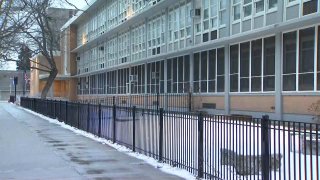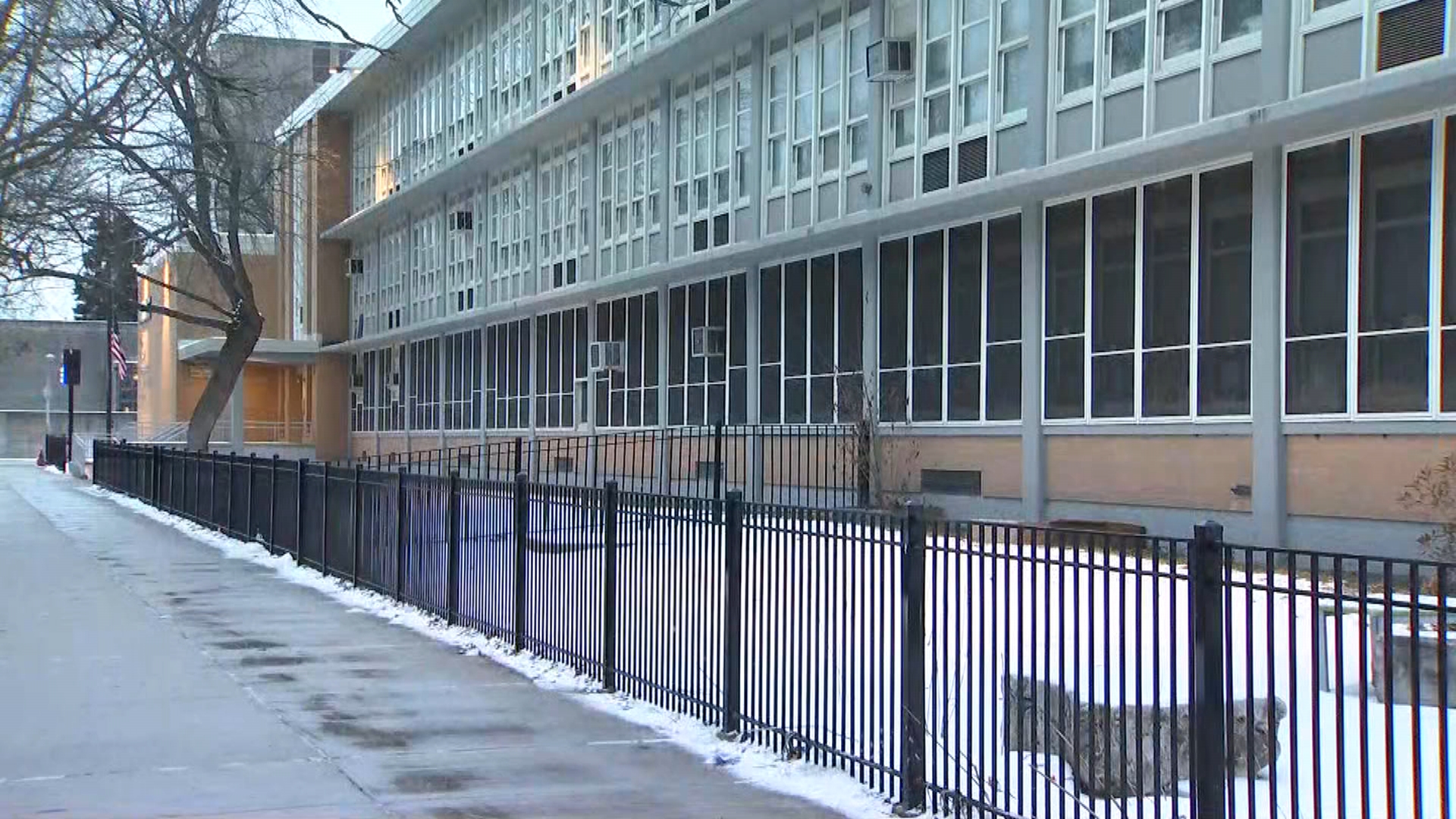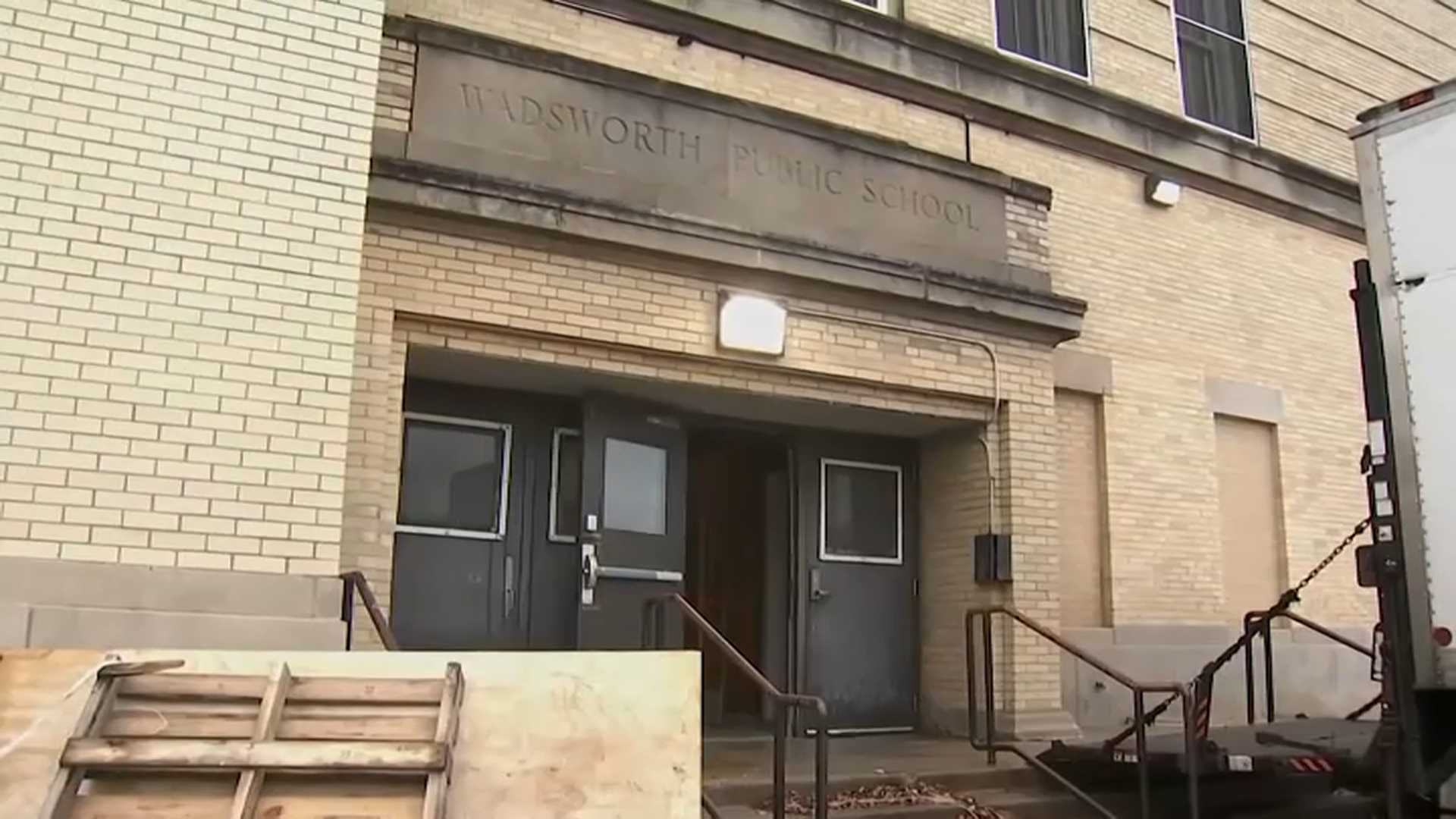
About a dozen asylum seekers arriving Thursday at a former South Side elementary school that was transformed into a shelter were met with resistance from two Chicago residents.
Andre Smith, who lives in nearby Washington Park, and Luis Cardona, who lives in Woodlawn, stood in front of a Chicago Transit Authority bus transporting the asylum seekers to the former James Wadsworth Elementary School, 6420 S. University Ave.
“The city wasn’t transparent with the residents — us — and we are not going to be transparent with them,” Smith said as he stood near University Avenue and 64th Street. “They didn’t work with us, so we’re not working with them. We’re not moving; we’re willing to be arrested.”
More than a dozen Chicago police officers stood nearby as police also taped off the property around the school and nearby roads. One person on the bus used a phone to film journalists gathered near the intersection.
Feeling out of the loop? We'll catch you up on the Chicago news you need to know. Sign up for the weekly Chicago Catch-Up newsletter here.
About an hour or so after, a few officers got on the bus as the driver reversed down University Avenue to 63rd Street and drove on Greenwood Avenue to reach one of the school’s entrances. People who had been on the bus were seen going into the building carrying bicycles, bags and plastic storage bins.
Two more busloads of immigrants were dropped off at the shelter later in the afternoon. Mayor Lori Lightfoot’s office confirmed Thursday that 100 men and women were moved into the shelter.
“Due to capacity levels, these individuals were relocated from other facilities,” according to a statement from Lightfoot’s office.
The city’s plan to transform the shuttered school into a shelter has been met with controversy. The opening was delayed for weeks after residents and Ald. Jeanette Taylor — whose 20th Ward includes the property — pushed it back to allow for community input.
The dispute has also highlighted tensions between Black and Latino residents.
City officials previously told the public the shelter will initially house about 250 adult men and women. The property will be used as a shelter for at least two years, city officials previously told residents during public meetings.
During the last community meeting, city officials said more than 5,000 asylum seekers have arrived in Chicago from Texas and Colorado in recent months. Although buses arriving to the city have slowed, officials said they still are seeing about 50 people a day seeking assistance.
Many of the individuals who have arrived in recent months have fled economic and political instability in Venezuela.
The University of Chicago’s police department is expected to provide security for the area. City officials also touted changes, such as creating indoor showers rather than an outdoor structure for showers to alleviate concerns from residents.
Smith and Cardona stood nearby but did not try to stop the bus again. Still, the two said they planned to stay in the area.
“We just want transparency,” Smith said. “They’re saying they aren’t using our tax dollars, but this bus right here is our tax dollar. It says ‘CTA.’ We want our resources. We’re paying taxes, and our alleys aren’t clean, our streets are not safe. So why can’t our tax dollars go to that and not this?”
Jennie Newsome, who lives near the school, said she thought the city should allow the public to see the conditions inside.
“There were other buildings right downtown where there are actual resources,” Newsome said, adding that she felt like the asylum seekers are being treated like garbage.
She said it wasn’t until recently that the city began working on the property after years of neglect.
On Thursday afternoon as police officers continued to guard the area, a few asylum seekers were seen leaving the property on bicycles. Smith and Cardona asked the group where they were from.
“Venezuela,” the man said as he continued riding his bicycle past the crowd.




